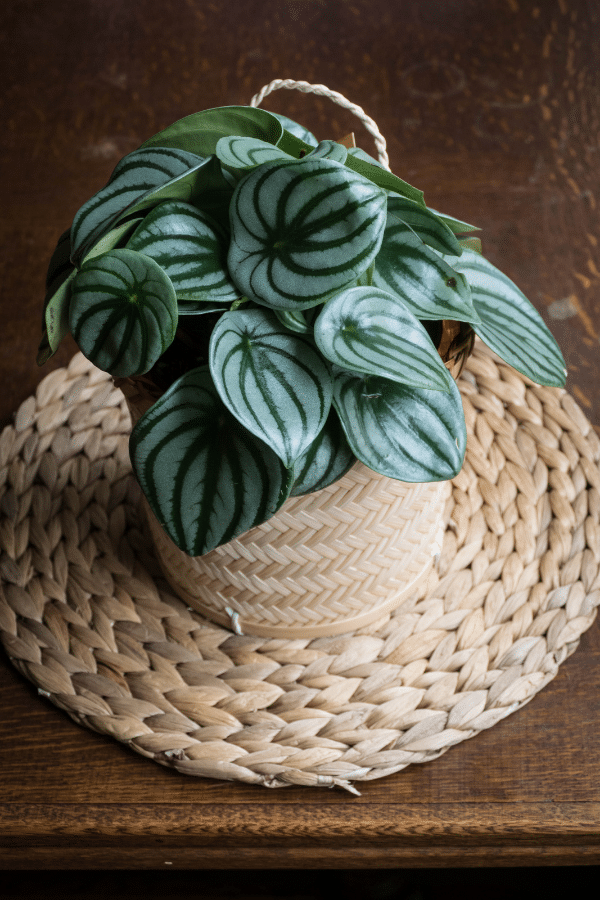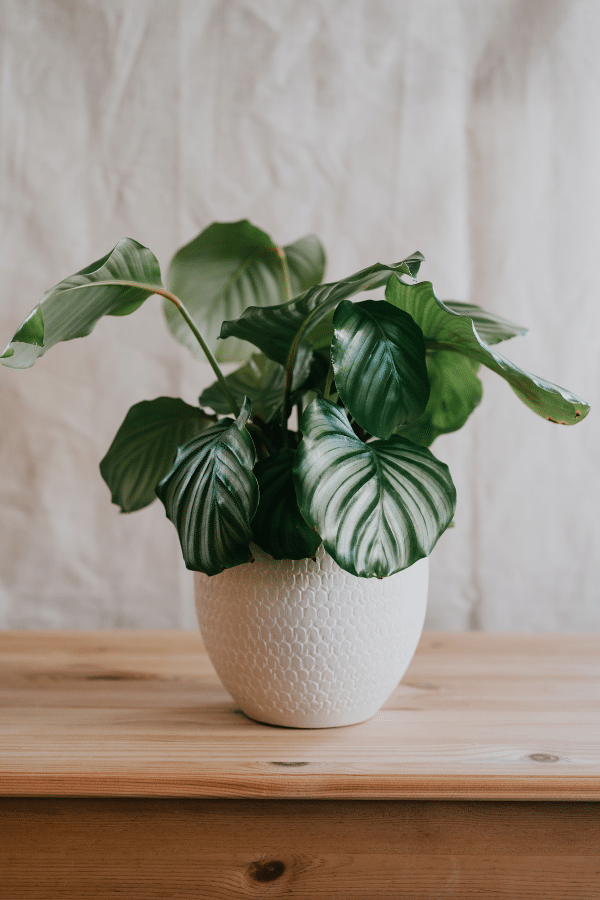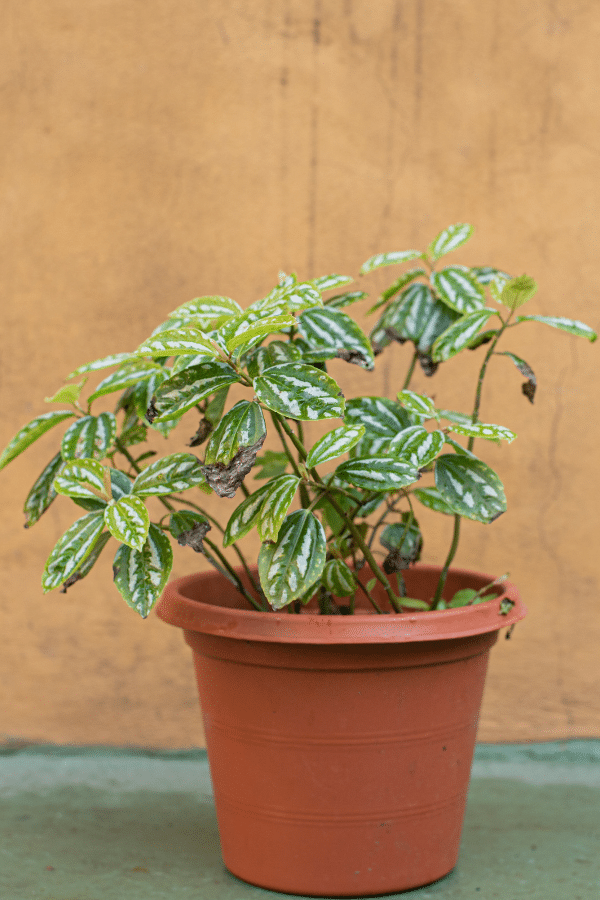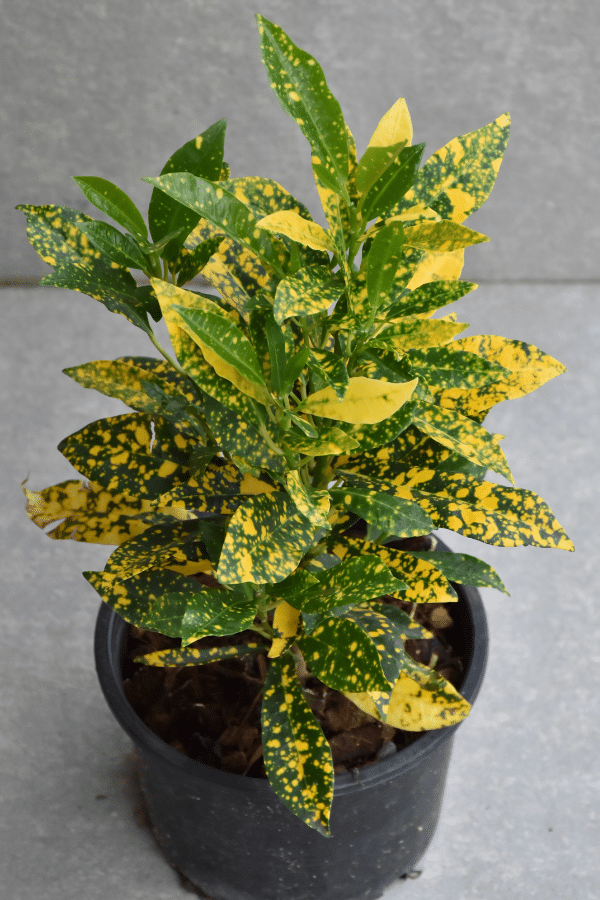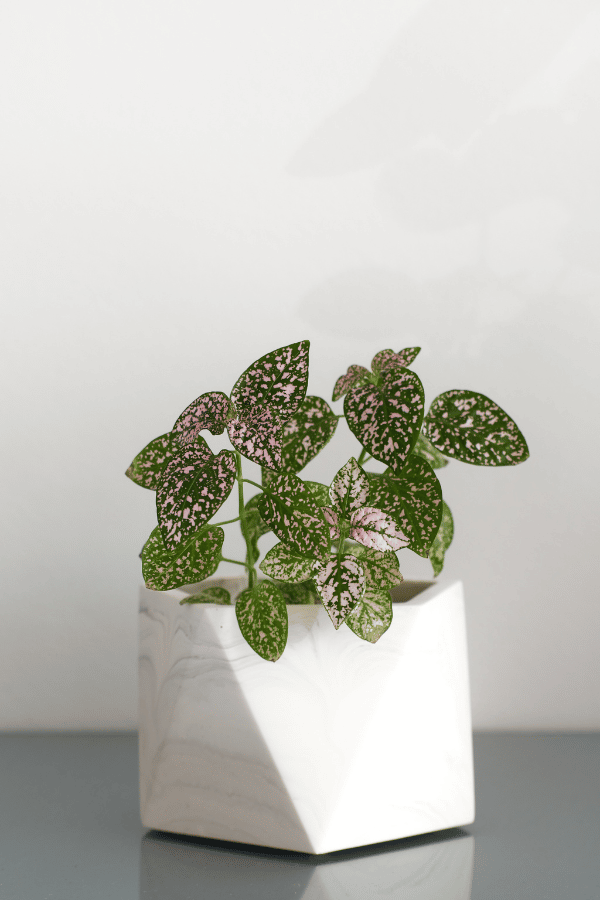Philodendron Giganteum
Scientific Name: Philodendron Giganteum
Common Name: Giant Philodendron
Philodendron Giganteum care is easy as long as you have enough room to grow this plant as the leaves and overall plant will get quite large. If you want a floor houseplant that grows relatively fast with massive heart-shaped leaves, the Giant Philodendron may be the plant for you.
To give this Philodendron plant the best care, it requires light and airy soil, allow the soil to dry out between waterings, provide it with bright indirect sunlight, temperatures ranging from 60-85F, and above-average humidity levels.
Quick Care Overview
| Common Name | Giant Philodendron |
| Scientific Name | Philodendron Giganteum |
| Family | Araceae |
| Origin | South America, Caribbean |
| Growth Rate | Medium |
| Identification | Enormous heart-shaped leaves reaching 3 feet |
| Height | Up to 4 feet tall |
| Soil | Airy soil of compost, perlite, and orchid bark |
| Water | Let top two inches of soil dry out |
| Temperature | 60-85F |
| Sunlight | Bright indirect light |
| Toxic to Cats & Dogs | Yes |
| Toxic to Humans | Yes |
| Pests | Mealybugs, spider mites, aphids, fungus gnats |
| Diseases | Root rot |
Below we will dive deep into this Philodendron Giganteum care guide.
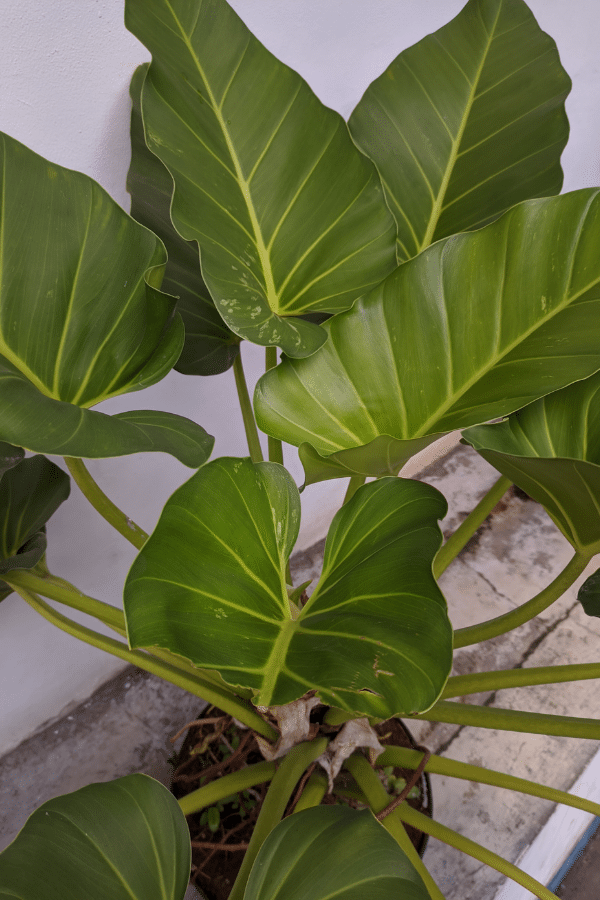
Philodendron Giganteum History
Philodendron Giganteum may be the perfect plant for you if you are looking for a large and lush tropical plant that is perfect for beginners and easy to care for. This Philodendron has giant leaves that burst with green vibrance. After its discovery in the mid-19th century, this Philodendron has remained a favorite amongst gardeners due to its colossal leaves.
Philodendron Giganteum Identification
Amongst all the Philodendrons, Philodendron Giganteum stands out due to the enormous size of its foliage. Oversized heart-shaped leaves are a vibrant green color and may grow up to 3 feet in length.
Philodendron Giganteum Growth Facts
Philodendron Giganteum is a long-living, fast-growing plant that will require ample room to grow.
How Big Does a Philodendron Giganteum Get?
This Philodendron is quite large and may grow up to 15 feet in its natural environment. However, as an indoor plant, this plant will only likely grow to become up to 4 feet tall.
Philodendron Giganteum Care
This plant is very easy to care for and doesn’t require much effort to keep happy.
Philodendron Giganteum Soil
Philodendron Giganteum requires light, airy soil such as from a standard potting mix with incorporations of perlite, orchid bark, and compost. Alternatively, a mixture of sphagnum peat moss and perlite may be used, or a commercial cactus mixture.
Philodendron Giganteum Fertilizer
You should fertilize your Philodendron monthly during the growing season. Select a balanced liquid organic fertilizer indicated for houseplants. Ensure that you follow all label instructions and do not fertilize during the winter months while the plant is in dormancy.
Philodendron Giganteum Watering
Philodendron Giganteum will likely need to be watered at least once per week during the warm growing season, depending on growing conditions. You should rewater your Philodendron after the top 2 inches of soil has become dry. During the colder fall and winter seasons, watering should be scaled back to avoid overwatering. Overwatering is a leading cause of plant disease with Philodendron Giganteum. Ensure that your plant’s container has drainage holes. Additionally, underwatering may cause issues with this plant and cause drooping leaves. If your Philodendron Giganteum has drooping leaves, try increasing your watering frequency.
Philodendron Giganteum Light Requirements
Philodendron Giganteum, being a tropical plant, likes growing in bright, indirect light to partial shade. If the foliage of this plant begins to dull, you will note that your Philodendron requires more light to have rich green leaves. However, too much direct sunlight will scorch this plant’s leaves. Being placed near a western-facing window is a good choice for this plant.
Philodendron Giganteum Temperature & Humidity
This Giant Philo likes to be kept in an environment with warm temperatures between 60-85 degrees Fahrenheit. This plant will tolerate temperatures down to 50 degrees Fahrenheit but should never be allowed to reach lower temperatures. This Philodendron also does not like being exposed to large temperature fluctuations and, as such, should not be kept near cold windows, AC units, drafts, or heaters. Being a tropical plant, this Philodendron will enjoy being grown in above-average humidity, such as when placed in a bathroom due to the excess moisture or a room with a humidifier. A pebble tray may also be added to increase humidity.
Repotting Philodendron Giganteum
This plant likes to remain slightly rootbound, so it should only be repotted when roots are seen sticking out of the drainage holes of its container. Repotting should be done in spring. This plant exhibit signs of stress from replanting, but should bounce back within a few weeks. To repot, pick a new pot that is 1 to 3 inches wider in diameter with drainage holes. Pour fresh soil, as mentioned above, into the planter, make room for the plant in the center of the pot, and place the plant into the pot. Add more soil and lightly tamp down the plant and the soil to get the roots to root.
Philodendron Giganteum Maintenance & Pruning
This plant should be periodically pruned for aesthetic reasons. Any discolored, yellow, or dead leaves should be removed using clean pruning shears. Additionally, in spring, during the growing season, you may prune this Philodendron back to maintain its size.
Philodendron Giganteum Propagation
Philodendron Giganteum may be propagated easily through stem cuttings. To propagate, simply cut a stem that is several inches long below a node and dip the stem into rooting hormone. Place the cutting into fresh soil and place in low light. Give the plant water after about a week, and after another two weeks, gently tug at the plant to see if it has rooted. If the cutting is firm in the soil, it has propagated successfully.
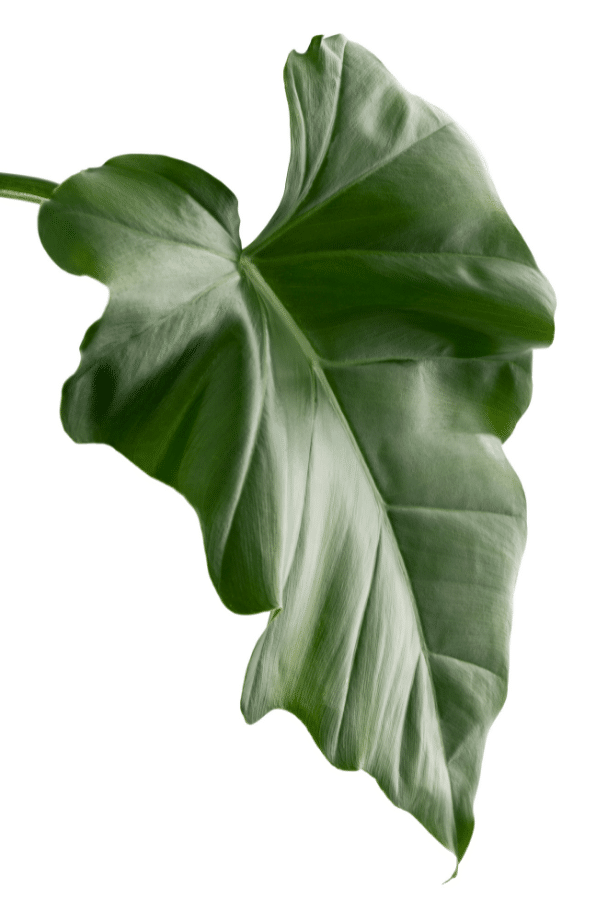
Philodendron Giganteum Toxicity
Like many plants in Philodendron species, this plant contains calcium oxalate crystals, making Philodendron Giganteum a toxic houseplant to humans and pets. This plant should never be ingested and always wash hands after handling.
Toxicity to Humans
This Philodendron is considered toxic to humans and should be kept out of reach of children. Ingestion may cause burning and irritation of the mouth and digestive tract.
Toxicity to Cats & Dogs
Philodendron Giganteum is also considered toxic to pets and should never be consumed. If you suspect your pet has consumed any portion of this plant, you should immediately contact your veterinarian or animal poison control.
Philodendron Giganteum Problems
Philodendron Giganteum Leaves Turning Yellow
When the foliage of this plant turns yellow, it is often an indicator of overwatering, underwatering, nutrient deficiency, or improper lighting.
Philodendron Giganteum Leaves Turning Brown
Browning of the foliage is a common indicator of water deficiency in Philodendron Giganteum. Get to know your plant and establish a good watering schedule that they will like.
Philodendron Giganteum Diseases
Philodendron Giganteum is susceptible to root rot and other bacterial infections and fungal issues on its leaves. Ensure that the leaves are not left soaking in water in poor light conditions. Also, ensure that you are not overwatering your plant. Diseased plants may be isolated and treated with a fungicide. Ensure that you follow all label instructions.
Philodendron Giganteum Pests
While Philodendron Giganteum is considered pest resistant, some common pests that can still affect the plant are mealybugs, spider mites, fungus gnats, and aphids may become a problem. If pest infestation is identified, isolate your plant, and treat it with a pesticide, such as insecticidal soap. Neem oil may also help. Ensure that you follow all label instructions.

